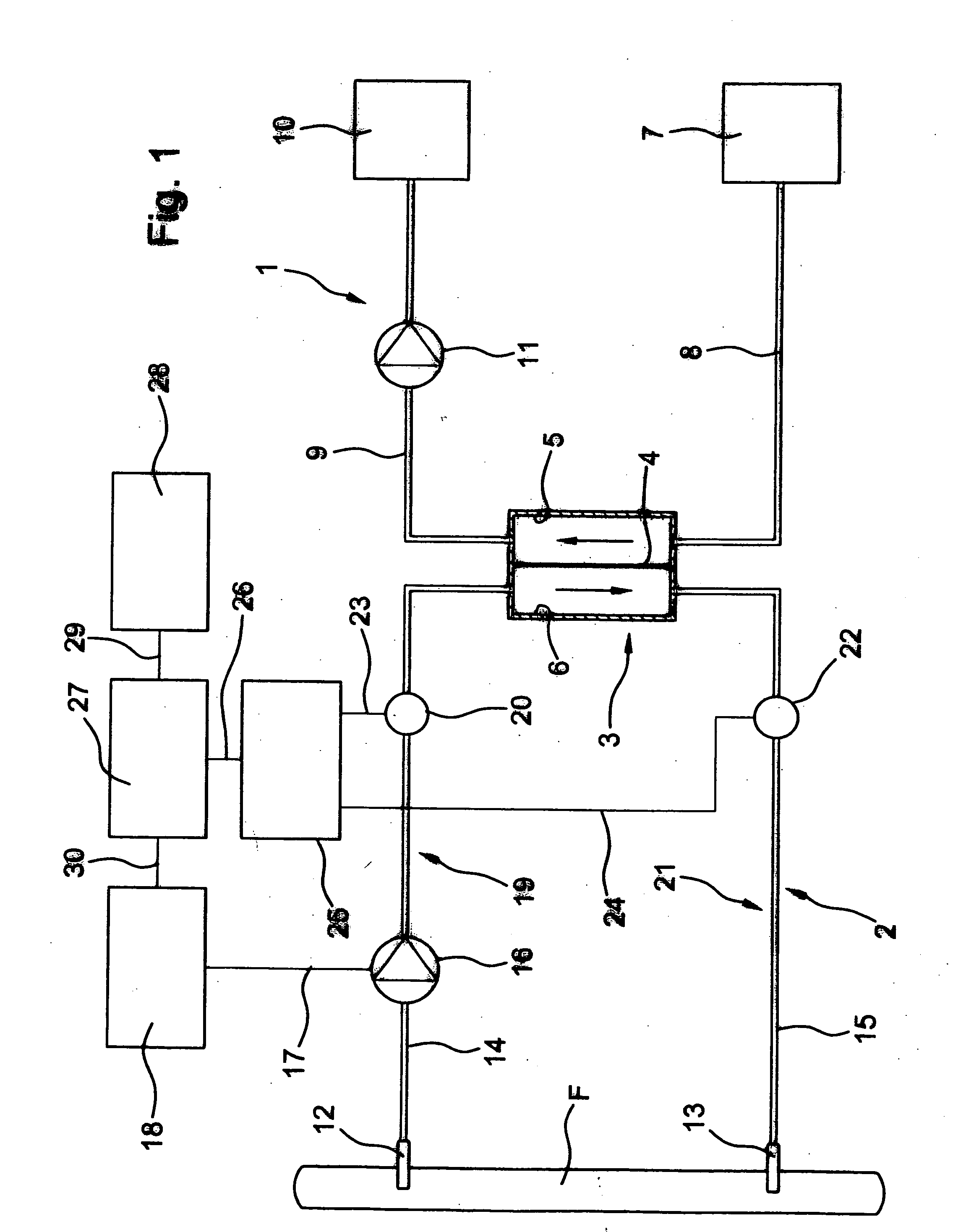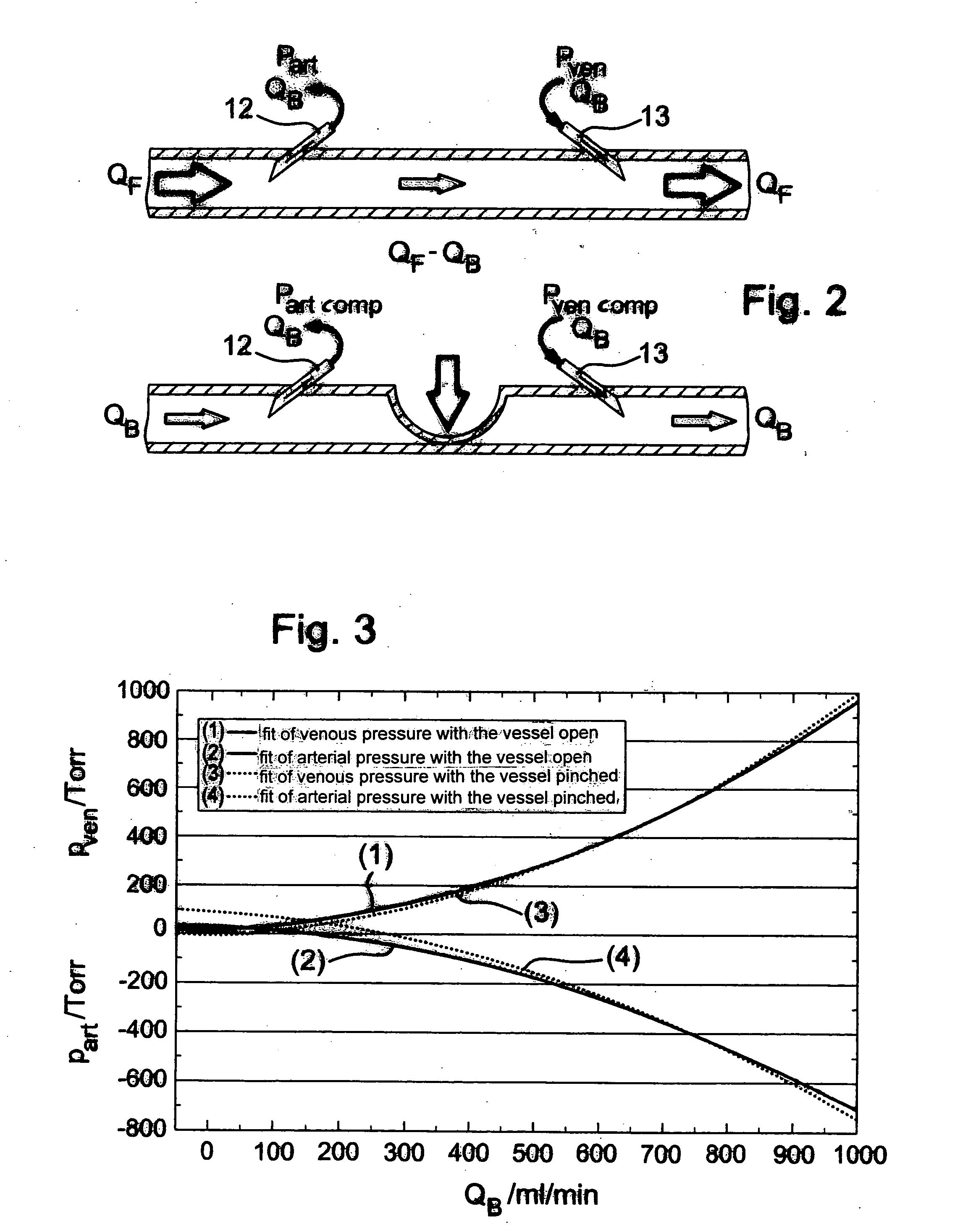Method and device for determining blood flow in a vascular access
a vascular access and blood flow technology, applied in the direction of blood flow measurement, medical devices, catheters, etc., can solve the problems of high risk of thrombosis, high risk of residual pulmonary embolism, blood loss and infection, etc., and achieve high certainty, simple implementation technology, and high reliability
- Summary
- Abstract
- Description
- Claims
- Application Information
AI Technical Summary
Benefits of technology
Problems solved by technology
Method used
Image
Examples
Embodiment Construction
[0027] The device according to the invention for determining the blood flow QF in the vascular access (fistula flow) can be assembled, for example, as a separate component group. However, the device may also be part of the blood treatment machine, especially since some components used in the device are already present in known blood treatment machines. The device for determining the fistula flow, together with the necessary components of the blood treatment machine are described below. In one preferred embodiment, the blood treatment machine can be a conventional dialysis machine.
[0028] The dialysis machine can include a dialysis fluid circulation loop 1 and an extracorporeal blood circulation loop 2, between which there is a dialyzer 3 which is divided by a semipermeable membrane 4 into a dialysis fluid chamber 5 and a blood chamber 6. A dialysis fluid inlet line 8 leads from a dialysis fluid source 7 to the inlet of the dialysis fluid chamber, from whose outlet a dialysis fluid o...
PUM
 Login to View More
Login to View More Abstract
Description
Claims
Application Information
 Login to View More
Login to View More - R&D
- Intellectual Property
- Life Sciences
- Materials
- Tech Scout
- Unparalleled Data Quality
- Higher Quality Content
- 60% Fewer Hallucinations
Browse by: Latest US Patents, China's latest patents, Technical Efficacy Thesaurus, Application Domain, Technology Topic, Popular Technical Reports.
© 2025 PatSnap. All rights reserved.Legal|Privacy policy|Modern Slavery Act Transparency Statement|Sitemap|About US| Contact US: help@patsnap.com



